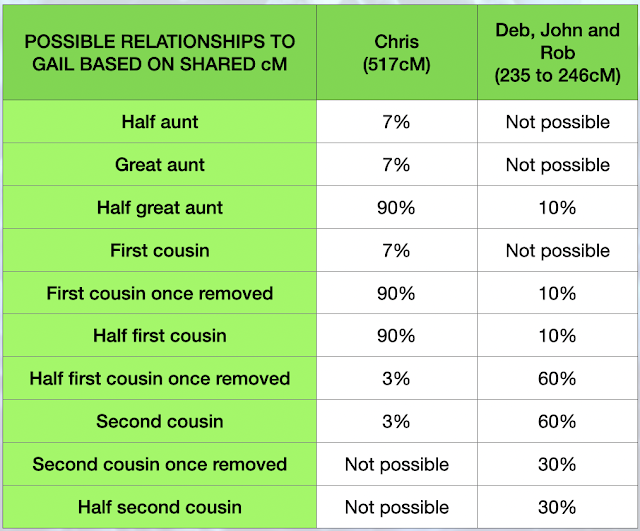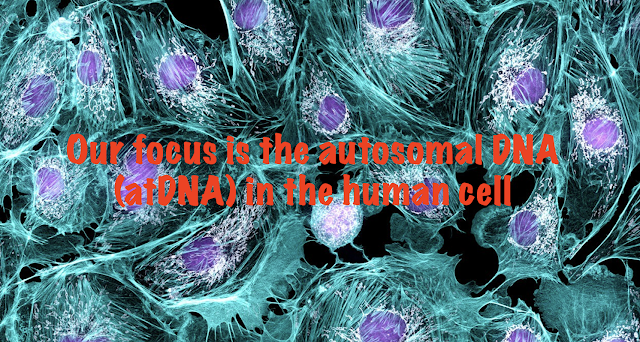MODULE 4 Preparation: "What are the Odds?" (WATO) tool at DNA Painter
These activities are designed to give you some familiarity with WATO prior to Module 4.
To undertake these activities, you should register for a free DNAPainter.com membership if you don't already have one.
Just do as much as you can. There's a link to a 30 minute video I've prepared to explain the case study HERE.
If you have any questions, your can raise them in our discussion session or post them in Basecamp.
Research question: What is Gail's relationship to Chris, Deb, John and Rob?
This is an example of a DNA dilemma from my family. You were introduced to the case study during the Module 3 presentations. In the Module 4 presentations, we’ll take some twists and turns with the case study to look at the WATO tool.
What we know:
- Gail is a shared match with Chris, Deb, John and Robert.
- Deb, John and Rob are siblings.
- Chris is their first cousin.
- Deb, John and Rob's mother, Pat, is the sister of Frank, Chris's father.
- Frank and Pat are the children of Jim and Essie.
- Jim and Essie were born in 1891 and married in 1919 in Sydney. Jim was born in Newcastle and Essie was born in Sydney.
- Frank was Jim and Essie’s first child. He was born in 1920 in Sydney.
- Pat was Jim and Essie’s second child. She was born in 1930 in Sydney.
- Chris shares 517cM of DNA with Gail.
- Deb shares 239cM of DNA with Gail.
- John shares 235cM of DNA with Gail.
- Rob shares 246cM of DNA with Gail.
- Gail was born in 1946 in Sydney.
Activities 1
Using WATO, prepare a family tree showing the relationships between Jim and Essie and their grandchildren (Chris, Deb, John and Rob) showing the DNA each shares with Gail.


